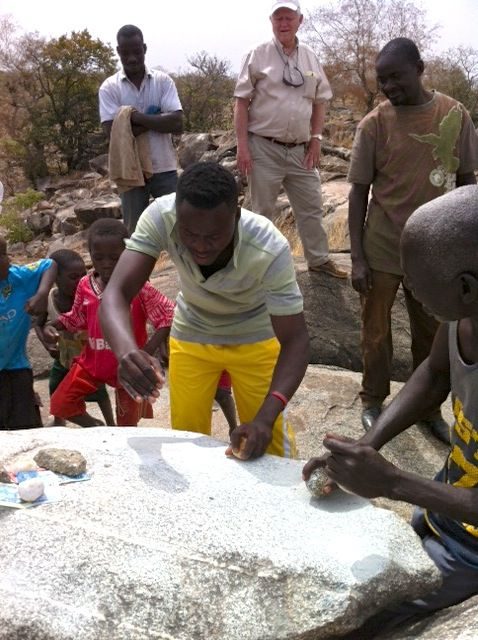Places Shape People

This week, a group of Episcopal Church leaders and lay members have been on a study tour in Ghana, West Africa, to visit Episcopal Relief & Development field partners and programs. Some of their individual responses from the trip will be published on the blog. Here, Canon Sam McDonald, Deputy Chief Operating Officer and Director of Mission of the Episcopal Church, shares about the impact of a visit to a slave camp on Ghana’s Cape Coast.
I’ve made a few trips to Africa over the years. Each area, each country, even each community, has some profound, deep story of its history that leaves a footprint forever on my soul. “Places shape people,” one Kenyan priest and I often say to each other. By hearing the sounds, the music, the language, the stories of a place; by smelling the scents and tasting the flavors; by walking around in the village and in homes; by letting a place come to us and meet us, we can begin to be spiritually open, and even vulnerable. Only then can a place shape us in a new image.
Ghana, of course, has a particular place in the history of the world regarding the trans-Atlantic slave trade. Its geography, perhaps as much as anything, handed it such a destiny. The legacy of this history is abundantly evident. Earlier this week, we stopped at Paga Slave Camp. These were stopping places for those human beings who had been captured and planned to be sold along the coast.
This camp was a large outcrop of huge boulders in a hot, barren area. A guide joined us to show us the various areas of the camp, where slaves would gather, sleep, and eat. There was the awful place where they were punished, and a place where they were buried. There was even a huge rock that they played like a drum to pass the time, by smacking smaller stones against it. A group of men demonstrated, playing and singing while a few children danced. It was extremely difficult to navigate the emotion resulting from the paradox of beautiful music and children smiling and moving alongside the chilling memory of why this place existed, and why we were compelled to stop and hear the story. How do I sort that out as a white male from the United States? At moments, it was too hard to even engage in my mind and heart.
After the men were done playing, a layer of grey dust from the beating of the stones lay across the large boulder “drum.” The tour group walked away to the next station. After almost everyone was gone, I paused and traced my finger through the dust. How many layers of dust must have been made on this boulder by human beings trying to find some break of joy in the cloud of despair that was all around them? Many of them would die on the two-week walk that lay ahead of them to the coast. It was impossible for me to sort it out in the moment. So, I grabbed a handful of the dust and put it in my pocket, as a reminder. I can’t just leave this here. Just the previous day was Ash Wednesday. “Ashes to ashes, dust to dust.” I don’t know if I will ever understand that holy day the same way again. But I can’t simply leave my discomfort here. I can’t leave my questions. I don’t have any answers. I don’t even know how to begin to respond to the stirring in my soul.
The next day, we found ourselves in the slave castles where the Africans who survived the walk would be kept, and sold into slavery. In the midst of that horror, I remembered the dust. Places shape people, and this place has only just begun to shape me.
Photo: A demonstration of the rock “drum” that slaves would play to pass the time. Courtesy of Brian Sellers-Petersen.


